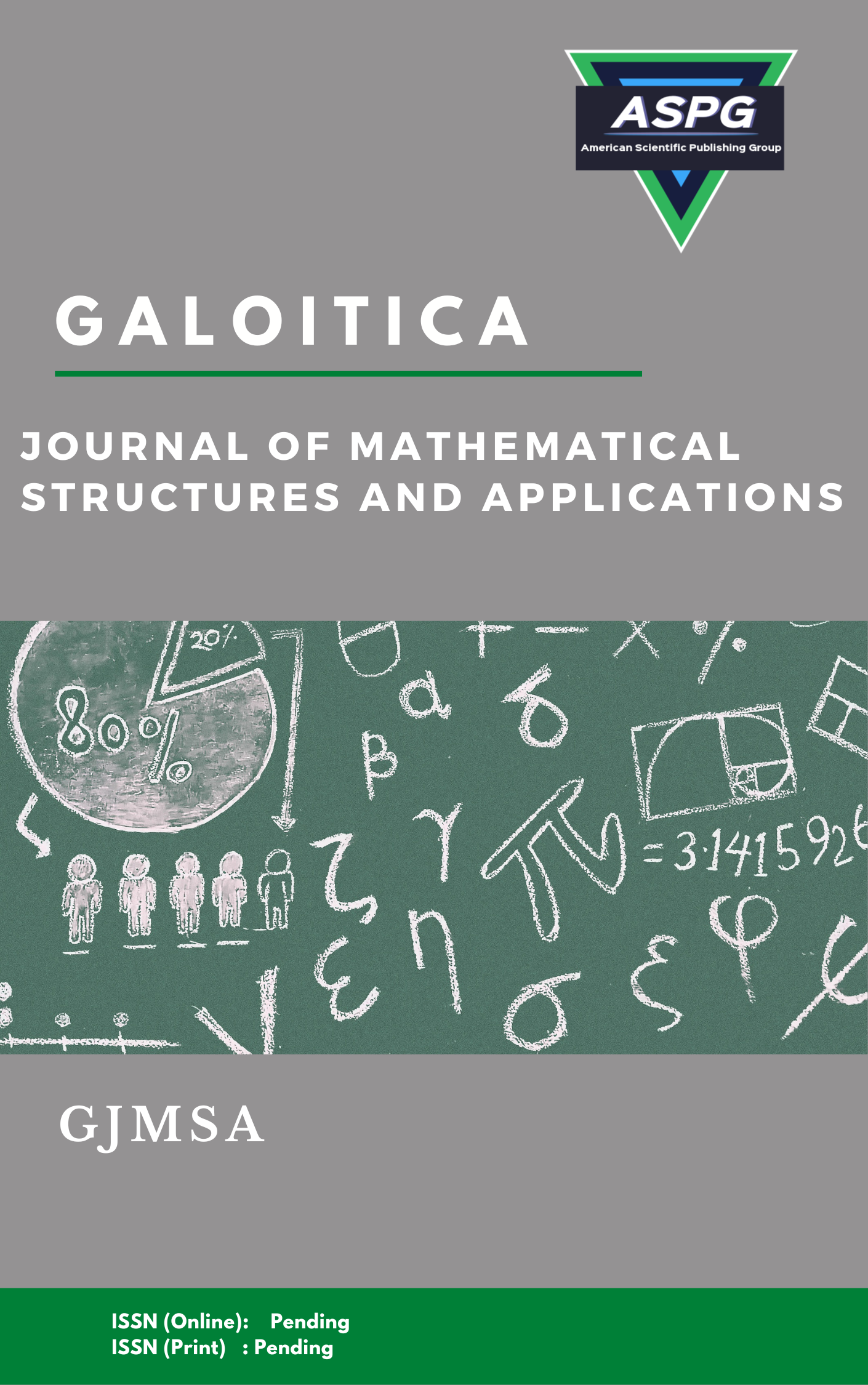

Volume 12 , Issue 1 , PP: 01-08, 2025 | Cite this article as | XML | Html | PDF | Full Length Article
Mohammad Abobala 1 * , Hasan Sankari 2
Doi: https://doi.org/10.54216/GJMSA.0120101
This paper is dedicated to study 4-cyclic refined vector spaces, where we classify these spaces by using semi-module isomorphisms as direct product of classical complex vector spaces. In addition, we study the inner products defined over these structures and we present sufficient conditions for 4-cyclic refined orthogonality.
4-cyclic refined space , 4-cyclic refined inner product , Orthogonal basis , 4-cyclic refined matrix
[1] J. Smith and A. Johnson, “Operational Research Techniques in Business Management,” Journal of Operations Research, vol. 15, no. 2, pp. 101-115, 2021.
[2] L. Green and M. Brown, “Cybersecurity Frameworks for Emerging Technologies,” International Journal of Information Security, vol. 29, no. 1, pp. 45-60, 2022.
[3] R. White and T. Black, “Applications of Fusion Technology in Industry,” Journal of Advanced Manufacturing Technology, vol. 7, no. 3, pp. 200-215, 2023.
[4] S. Taylor and P. Lee, “Smart Systems for Internet Connectivity,” Journal of Network and Computer Applications, vol. 45, no. 4, pp. 99-112, 2024.
[5] A. Patel and B. Singh, “Ad Hoc Networks: Current Trends and Future Directions,” Journal of Communications and Networks, vol. 10, no. 2, pp. 120-135, 2022.
[6] C. Martinez and D. Kim, “Neutrosophic Approaches in Decision-Making,” Journal of Applied Mathematics, vol. 18, no. 1, pp. 30-44, 2021.
[7] E. Robinson and F. Clark, “Innovations in Building Information Modeling,” Journal of Construction Engineering and Management, vol. 12, no. 3, pp. 50-65, 2023.
[8] G. Harris and H. Wilson, “Human-Computer Interaction: Modern Challenges,” Journal of Interaction Science, vol. 9, no. 2, pp. 88-102, 2024.
[9] I. Lewis and J. Moore, “AI Technologies in Educational Settings,” Journal of Educational Technology, vol. 11, no. 4, pp. 130-145, 2022.
[10] K. Taylor and L. Young, “Metaheuristic Algorithms for Optimization Problems,” International Journal of Computational Intelligence, vol. 8, no. 3, pp. 75-90, 2023.
[11] M. Green and N. Brown, “Computational Intelligence Applications,” Journal of Computational and Theoretical Chemistry, vol. 6, no. 1, pp. 60-78, 2022.
[12] O. Davis and P. Thompson, “Mathematical Structures in Current Research,” Journal of Mathematical Sciences, vol. 4, no. 2, pp. 95-108, 2023.
[13] Q. Johnson and R. Lee, “Data Analysis in Financial Contexts,” Journal of Financial Analytics, vol. 3, no. 1, pp. 20-35, 2024.
[14] S. Williams and T. Brown, “Sustainable Practices in Technology Development,” Journal of Environmental Technology, vol. 8, no. 2, pp. 45-58, 2022.
[15] T. Green and U. Martin, “Fusion Techniques for Information Integration,” Journal of Information Processing Systems, vol. 2, no. 1, pp. 30-44, 2023.
[16] V. Clark and W. Smith, “Theoretical Aspects of Computer Science,” Journal of Theoretical Computer Science, vol. 6, no. 3, pp. 11-25, 2021.
[17] A. Harris and B. Taylor, “Review of Metaheuristic Optimization Techniques,” Journal of Optimization Theory and Applications, vol. 10, no. 4, pp. 150-165, 2024.
[18] C. Adams and D. Moore, “Challenges in Cybersecurity for Digital Systems,” Journal of Information Assurance, vol. 6, no. 3, pp. 60-74, 2023.
[19] E. Brown and F. Lee, “Innovations in Wireless Communication,” Journal of Wireless Communications, vol. 11, no. 2, pp. 80-95, 2022.
[20] G. Taylor and H. White, “Artificial Intelligence for Sustainable Development Goals,” Journal of Sustainable Technology, vol. 9, no. 1, pp. 15-29, 2024.
[21] I. Parker and J. Davis, “Applications of Neutrosophic Logic in Modern Science,” Journal of Logic and Computation, vol. 20, no. 4, pp. 100-115, 2023.